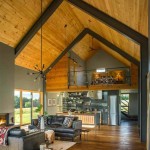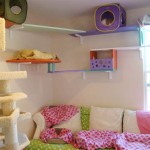```html
How to Decorate a Living Space
Decorating a living space is a multifaceted process that encompasses various aspects, from selecting appropriate color palettes to arranging furniture for optimal flow and functionality. A well-decorated living space should be both aesthetically pleasing and conducive to relaxation and social interaction. Effective decoration involves careful planning, thoughtful execution, and a keen understanding of design principles.
Planning and Preparation
Prior to initiating any decoration project, a comprehensive plan is essential. This plan should articulate the intended purpose of the living space, the desired aesthetic, and the budgetary limitations. Consider the existing architectural features of the room, such as the size, shape, and natural light sources. Analyze how the space is currently used and how it could be improved to better serve the occupants. This preliminary assessment informs subsequent decisions regarding color schemes, furniture selection, and accessory placement.
A crucial aspect of planning involves defining the aesthetic style. This could range from contemporary and minimalist to traditional and maximalist. Research different design styles and identify elements that resonate with personal preferences. Consider the overall ambiance desired – is the goal a calming and serene environment, or a vibrant and stimulating one? Defining the desired aesthetic provides a framework for making consistent and cohesive design choices throughout the decoration process. Gathering inspiration from various sources, such as magazines, online platforms, and model homes, can further refine the design vision.
Budgetary considerations are paramount. Determine a realistic budget that encompasses all aspects of the decoration project, including paint, furniture, accessories, and potential professional fees for interior designers or contractors. Allocate funds strategically, prioritizing essential elements such as furniture and flooring. Consider cost-effective alternatives and explore opportunities to repurpose existing items. Maintaining a detailed budget spreadsheet helps track expenses and ensures adherence to financial constraints.
Color Palette and Material Selection
The color palette is a fundamental element of interior design, significantly influencing the mood and atmosphere of the living space. Colors evoke different emotions and perceptions; therefore, selecting the right combination is critical. Consider the principles of color theory, including complementary colors, analogous colors, and triadic colors. Complementary colors, such as blue and orange, create a vibrant and dynamic contrast. Analogous colors, such as blue, blue-green, and green, offer a harmonious and soothing effect. Triadic colors, such as red, yellow, and blue, provide a balanced and visually stimulating arrangement.
Neutral colors, such as white, gray, and beige, serve as a versatile foundation for any color scheme. These colors create a sense of spaciousness and can be easily complemented with brighter accent colors. Incorporating textures through different materials, such as fabrics, wood, and metal, adds depth and visual interest to the neutral palette. Experiment with different shades and tones of neutral colors to create subtle variations and prevent the space from feeling monotonous.
Material selection plays a significant role in the overall aesthetic and functionality of the living space. For flooring, consider options such as hardwood, carpet, tile, or laminate. Hardwood offers durability and a classic aesthetic, while carpet provides comfort and insulation. Tile is suitable for high-traffic areas and wet environments, while laminate provides a cost-effective alternative to hardwood. Select materials that are durable, easy to maintain, and aesthetically consistent with the overall design style.
Fabrics used for upholstery, curtains, and cushions contribute significantly to the tactile and visual appeal of the living space. Choose fabrics that are both aesthetically pleasing and practical. Consider factors such as durability, stain resistance, and cleaning requirements. Natural fibers, such as cotton and linen, offer breathability and a soft texture. Synthetic fibers, such as polyester and acrylic, provide durability and resistance to fading. Incorporating a variety of textures and patterns through fabrics adds depth and visual interest to the room.
Furniture Arrangement and Space Optimization
Effective furniture arrangement is crucial for optimizing the flow and functionality of the living space. Consider the scale and proportion of furniture in relation to the size of the room. Avoid overcrowding the space with too much furniture, as this can create a claustrophobic and cluttered feel. Prioritize essential furniture pieces that serve the primary functions of the room, such as seating, storage, and a focal point.
Create a focal point in the room, such as a fireplace, a large window with a scenic view, or a statement piece of artwork. Arrange furniture to draw attention to the focal point and create a sense of balance. Consider the principles of symmetry and asymmetry when arranging furniture. Symmetrical arrangements create a sense of formality and order, while asymmetrical arrangements offer a more relaxed and informal feel.
Optimize space utilization by incorporating multi-functional furniture. Sofa beds provide additional sleeping space for guests, while storage ottomans offer concealed storage for blankets, pillows, and other items. Utilize vertical space by installing shelves and cabinets to maximize storage capacity without occupying valuable floor space. Consider the flow of traffic through the room and arrange furniture to facilitate easy movement and access to different areas.
Lighting plays a vital role in creating ambiance and enhancing the functionality of the living space. Incorporate a combination of ambient lighting, task lighting, and accent lighting to achieve a balanced and well-lit environment. Ambient lighting provides overall illumination, while task lighting is used for specific activities such as reading or working. Accent lighting highlights specific features of the room, such as artwork or architectural details. Utilize dimmers to adjust the intensity of the lighting and create different moods.
Mirrors can be strategically placed to reflect light and create the illusion of a larger space. Position mirrors opposite windows to maximize natural light and brighten up the room. Utilize mirrors to highlight interesting architectural features or to create a focal point. Avoid placing mirrors in areas where they reflect clutter or create distracting reflections.
Accessories, such as artwork, plants, and decorative objects, add personality and character to the living space. Choose accessories that reflect personal interests and complement the overall design style. Arrange accessories in a balanced and visually appealing manner, considering the principles of color, texture, and scale. Avoid overcrowding shelves and surfaces with too many accessories, as this can create a cluttered and overwhelming feel. Regularly rotate accessories to refresh the look of the room and maintain visual interest.
Plants add life and vibrancy to the living space, improving air quality and creating a sense of tranquility. Choose plants that are appropriate for the lighting conditions and humidity levels of the room. Arrange plants in a visually appealing manner, considering their size, shape, and color. Utilize planters that complement the overall design style and add a decorative touch.
Window treatments, such as curtains, blinds, and shades, provide privacy, control light levels, and enhance the aesthetic appeal of the living space. Choose window treatments that are appropriate for the style of the room and the desired level of privacy and light control. Consider the fabric, color, and pattern of the window treatments to ensure they complement the overall design scheme.
```:strip_icc()/cdn.cliqueinc.com__cache__posts__212361__-2030968-1483470364.700x0c-8571e60cad7b42a981ab29ae10b5c153-497b002f87af4747b2ab38b560e7c0fd.jpg?strip=all)
How To Decorate A Living Room 20 Ideas And Common Mistakes

How To Decorate A Living Room 11 Designer Tips Houzz

How To Decorate A Living Room 11 Designer Tips Houzz
Interior Designers Reveal The Mistakes You Re Making In A Living Room

Living Room Decor Ideas For Your Home Design Cafe

11 Living Room Design Ideas For Small Singapore Homes Style Degree

77 Best Living Room Decor Ideas 2025 Unique

Seven Effective Drawing Room Decoration Ideas Design Cafe

Modern Living Room Ideas For The Ultimate Hangout Spot
:strip_icc()/cdn.cliqueinc.com__cache__posts__212361__-2030969-1483470364.700x0c-1eef0dc89e044eb299b3d7e584231333-99c2fb2948524833ba3ac30ed09fbf7e.jpg?strip=all)
How To Decorate A Living Room 20 Ideas And Common Mistakes







